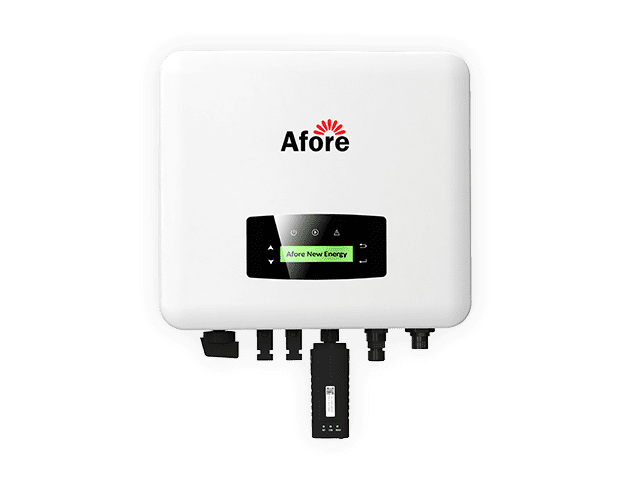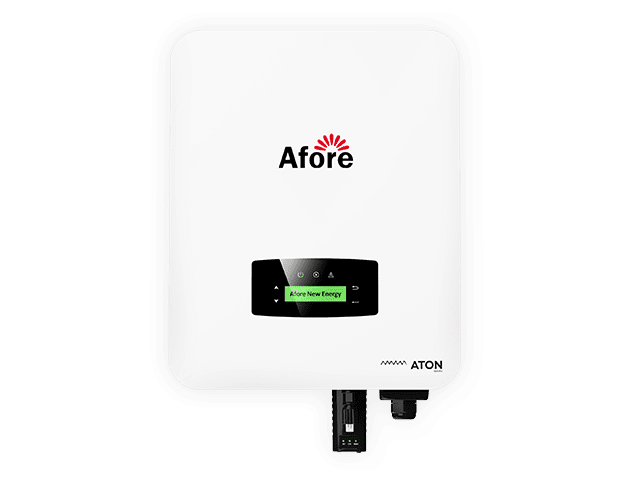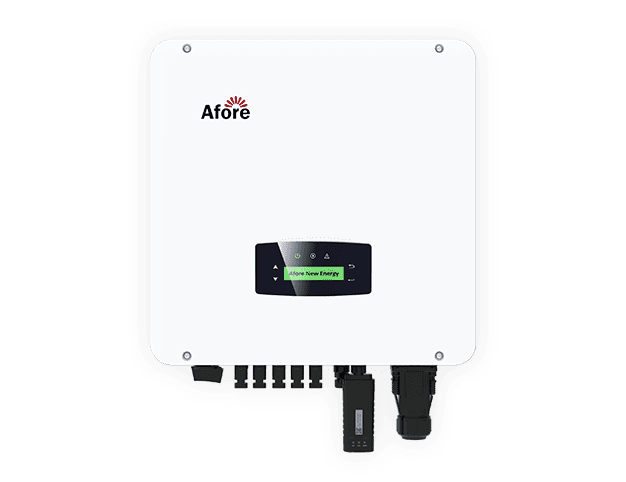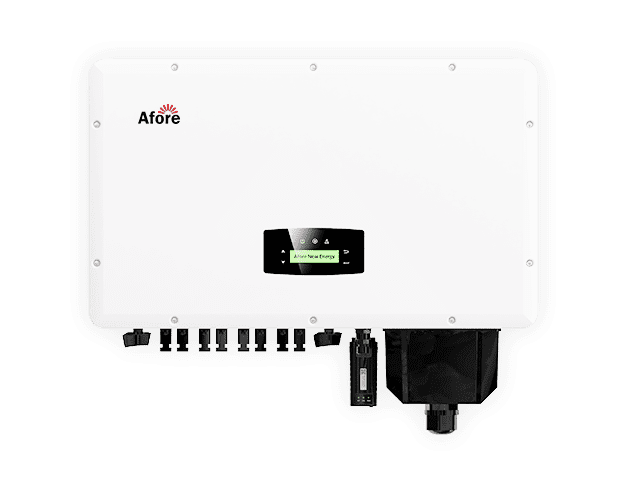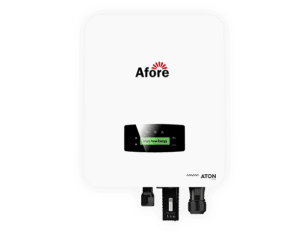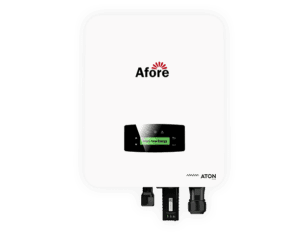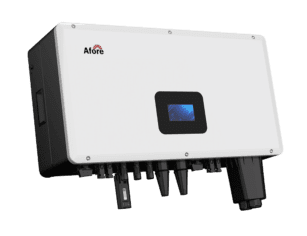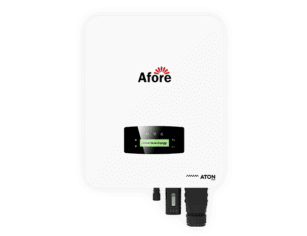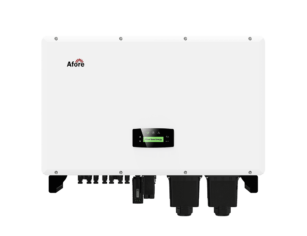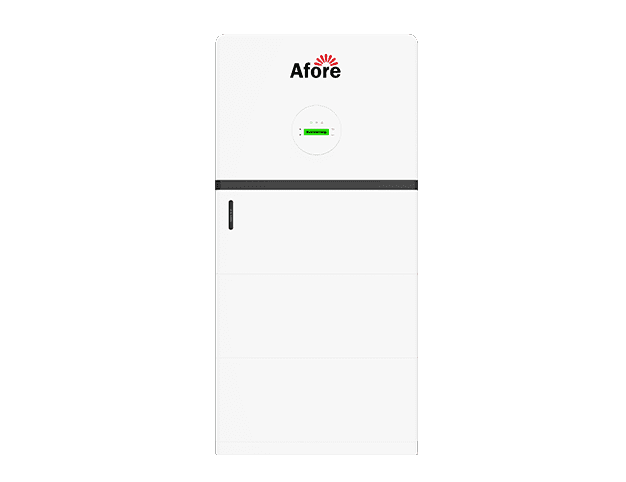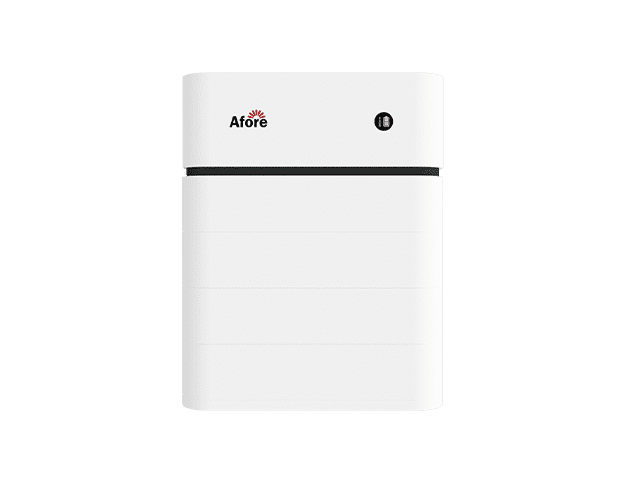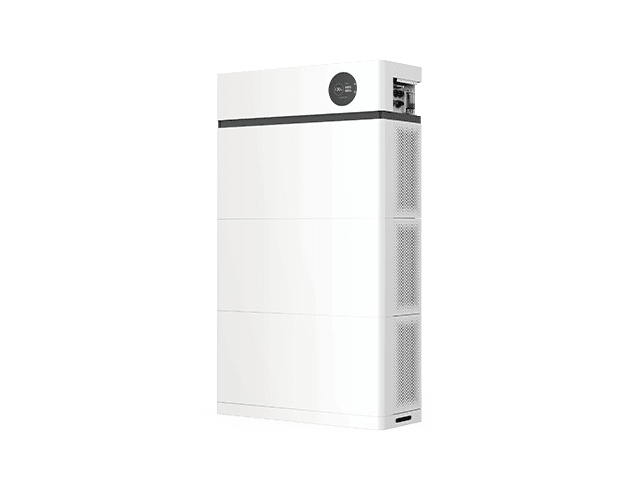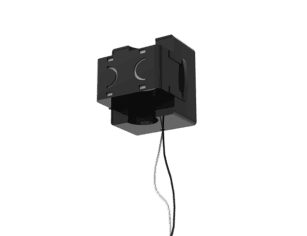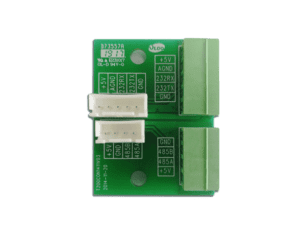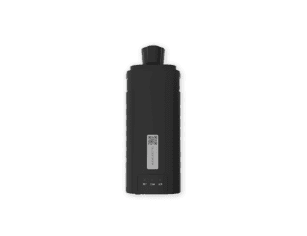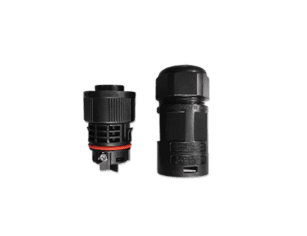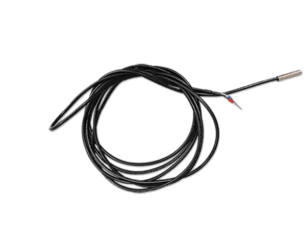Ultimativer Leitfaden für Solar-Batteriespeicher: Maximieren Sie die Energieeffizienz Ihres Hauses

Inhaltsübersicht
If you’re exploring solar battery storage for your home, here’s the gist: A battery bank of around 10–15 kWh (for many homes) can offer meaningful backup and energy-shifting benefits. Pairing that with a smart solar inverter ensures that the stored DC power is managed and converted correctly. Whether you’re aiming for resilience during outages, bill savings, or even partial off-grid independence, this guide walks you through how much storage you need, how the inverter fits in, how long it lasts, the cost, and whether it’s worth it.
Why Solar Battery Storage Matters
Solar battery storage has rapidly become one of the most important components for homeowners looking to maximize the benefits of their solar energy systems. While rooftop solar panels can generate electricity during the day, without storage, excess power is often sent back to the grid, where it may provide minimal compensation depending on your utility rates. By integrating solar battery storage, homeowners can retain and manage that excess energy for use when the sun isn’t shining.
A well sized battery system not only increases the self-consumption of your solar energy but also enhances energy resilience, reduces dependence on the grid, and can improve financial savings when combined with time-of-use utility pricing. Modern solar battery storage solutions are designed to work seamlessly with solar panels and inverters, ensuring that stored energy is efficiently converted and delivered to your home.
What Battery Storage Adds to Rooftop Solar
Solar battery storage essentially transforms a conventional solar panel setup into a fully controllable energy system. With storage, energy generated during sunny hours isn’t wasted; instead, it’s saved for periods of high demand, nighttime use, or power outages. This time-shifting capability allows homeowners to manage their electricity consumption more strategically, avoiding expensive peak rates and optimizing savings.
Furthermore, integrating battery storage enhances energy resilience. In the event of a grid outage, even a relatively small battery bank can provide power to critical circuits, such as lighting, refrigeration, or communication devices. This ensures continuity of essential household functions during emergencies. The system also provides flexibility to support future home technologies, like electric vehicle charging or home automation, by storing excess solar energy for these high-demand applications.
From a technical perspective, solar battery storage works in tandem with a Solarwechselrichter to convert stored DC power into usable AC electricity for your home. This integration ensures efficiency and safety, while enabling features like smart energy management and load prioritization.
Typical Homeowner Motivations
Homeowners choose solar battery storage for a variety of practical reasons, often driven by personal priorities and local energy conditions:
- Backup Power and Resilience: The most common motivation is to protect against grid outages. Even a small battery can keep essential loads running during short-term interruptions, providing peace of mind and energy independence.
- Financial Savings: In areas with time-of-use electricity rates or limited net metering, homeowners can store excess solar energy produced during low-cost periods and use it during peak pricing hours, significantly reducing monthly utility bills.
- Environmental Responsibility: Storing and using your own solar energy increases self-consumption, which can reduce reliance on fossil fuels and lower your household carbon footprint.
- Energy Independence: Some homeowners aim for partial or full off-grid living. While going fully off-grid requires a larger battery bank and careful planning, even moderate storage can reduce dependency on the grid and provide more control over your energy use.
- Future-Proofing the Home: With the increasing adoption of electric vehicles, smart appliances, and home automation, having solar battery storage ensures that your home is prepared for higher energy demands without overloading the grid or incurring excessive costs.
Ultimately, solar battery storage transforms a rooftop solar system from a simple electricity generator into a strategic energy management tool, allowing homeowners to gain control, reliability, and efficiency.

Key Concepts: kWh vs kW (Short Technical Primer)
Understanding the difference between kWh (kilowatt-hours) and kW (kilowatts) is fundamental when planning a solar battery storage system. These two terms are often confused, but they represent different aspects of electricity use: energy and power. Knowing the distinction helps homeowners correctly size their battery storage, select a compatible solar inverter, and manage household energy effectively.
kWh = Energy: How Much You Can Store or Use
A kilowatt-hour (kWh) measures energy over time—essentially, how much electricity you can consume or store. For example, if your home uses 1 kW continuously for one hour, that equals 1 kWh of energy. In the context of solar battery storage, kWh indicates the total amount of energy your battery can store for later use.
For instance, a 10 kWh battery stores enough energy to power a 1 kW load for approximately 10 hours. However, real-world usage must account for system inefficiencies, battery depth of discharge, and energy losses during conversion. These factors slightly reduce the usable energy compared to the nominal kWh rating.
kW = Power: How Much You Can Draw at Once
While kWh measures energy over time, kilowatts (kW) indicate the rate of energy use at any given moment. This is crucial for determining whether a solar battery can handle the instantaneous demands of your household.
Zum Beispiel:
- A fridge might draw 0.2 kW continuously.
- An electric oven could draw 3–5 kW when operating.
- A central air-conditioning system could peak at 4–6 kW.
Even if a battery has sufficient kWh capacity, it must be paired with a solar inverter capable of delivering the required kW output. Otherwise, the inverter could limit the number of appliances you can run simultaneously.
Usable Capacity vs Nominal Capacity
Not all the energy stored in a battery is usable. Most batteries have a recommended depth of discharge (DoD)—typically 80–90% for lithium-ion types—meaning you should avoid depleting the battery fully to extend its lifespan.
For example, a 10 kWh battery with an 80% usable capacity effectively provides 8 kWh for daily use. This is a critical consideration when sizing your solar battery storage for backup or bill-shifting purposes. The solar inverter must also be compatible with both the battery’s total capacity and the household’s peak kW demands.
Why This Matters for Solar Battery Storage
Understanding kWh vs kW allows homeowners to make informed decisions about:
- Battery sizing: How many kWh you need to cover your desired runtime or backup needs.
- Load planning: Which appliances or circuits the battery can support simultaneously.
- Inverter selection: Ensuring the solar inverter can handle peak loads without limiting performance.
- System efficiency: Avoiding over-sizing or under-sizing components, which could lead to energy loss or unnecessary costs.
In practical terms, pairing the right kWh capacity with a compatible kW-rated solar inverter ensures your battery system delivers reliable, efficient, and safe energy for your home. This understanding is the foundation of effective solar battery storage planning and prevents surprises in performance during real-world operation.
How to Size Solar Battery Storage: Step-by-Step Guide
Sizing a solar battery storage system correctly is one of the most important decisions a homeowner can make. Too small a battery and you risk running out of stored energy during outages or peak hours; too large, and you may overpay without significant benefits. This step-by-step guide breaks down the process to ensure your system delivers the right balance of capacity, reliability, and cost-efficiency.
Step 1 — Define Your Goals
The first step in sizing your solar battery storage system is clarifying what you want it to achieve. Common goals include:
- Backup power during outages: You might only need enough storage to keep essential circuits—like refrigeration, lighting, and communications—running for several hours.
- Bill reduction/time-of-use shifting: In regions with time-of-use (TOU) utility rates, storing energy during daytime solar production and using it during peak-priced hours can significantly lower monthly bills.
- Partial or full energy independence: For those aiming to reduce reliance on the grid, a larger battery bank can provide longer periods of self-sufficiency.
By clearly defining your objective, you can determine the battery size (kWh) and the inverter rating (kW) needed to meet those goals.
Step 2 — Calculate Your Energy Needs
Next, analyze your household electricity usage. Begin by reviewing your utility bills to determine your average daily consumption in kilowatt-hours (kWh). Then decide which loads you want your solar battery storage to cover:
- Essential loads only: Fridge, lights, WiFi, and small appliances.
- Partial house coverage: Include major appliances but exclude high-demand items like HVAC or water heaters.
- Whole-house coverage: All electrical loads, including high-demand appliances.
For example, if your essential loads total 1.5 kW and you want 8 hours of backup, you would need approximately 1.5 kW × 8 hours = 12 kWh of usable battery capacity. Always account for battery efficiency and depth of discharge, as not all nominal kWh is available for use.
Step 3 — Match Battery Capacity to Desired Runtime
Once you know your energy needs, calculate the battery capacity required to achieve your desired runtime. Consider the following:
- Daily usage: Multiply your daily energy consumption (kWh) by the number of days you want to be self-sufficient.
- Depth of discharge: Most modern batteries recommend 80–90% maximum depth of discharge to preserve lifespan. Factor this into your sizing.
- System losses: Include conversion losses from the solar inverter, wiring, and battery efficiency—typically around 5–10%.
Example calculation:
- Household essential load: 2 kW
- Desired backup: 10 hours
- Raw energy need: 2 kW × 10 h = 20 kWh
- Adjusted for 85% usable capacity: 20 ÷ 0.85 ≈ 23.5 kWh required nominal capacity
This ensures the battery bank can reliably supply the required power without over-discharging, extending its useful life.
Step 4 — Ensure the Inverter Matches Your Loads
A common mistake in battery system design is neglecting the solar inverter rating. Even if your battery has sufficient kWh, the inverter must be able to supply the kW needed for simultaneous loads.
Considerations for inverter sizing:
- Continuous power rating (kW): Must meet the typical simultaneous loads you expect to run.
- Surge capacity: Appliances with motors (e.g., air conditioners, pumps) draw extra power on startup; the inverter must handle these short spikes.
- Battery compatibility: The inverter must support the battery chemistry, voltage, and maximum charge/discharge rates.
Example: If your home has a peak load of 7 kW and your battery provides 20 kWh, the inverter must support at least 7 kW continuous output to run all loads simultaneously. A mismatch could limit the number of appliances you can use at once, even if the battery has adequate storage.
Step 5 — Plan for Future Expansion
Many homeowners consider expanding their solar battery storage over time. When designing your system:
- Ensure the inverter can accommodate additional battery modules.
- Check that wiring and installation space allow for future expansion.
- Factor in increasing energy demands, such as electric vehicle charging or additional appliances.
A scalable design allows you to start with a smaller battery bank for essential loads and expand as your needs evolve, optimizing both cost and performance.
Step 6 — Verify Grid Compatibility and Local Requirements
Finally, ensure your battery and solar inverter system comply with local utility and building regulations:
- Grid interconnection: Confirm that your solar inverter is compatible with grid-tied operation and can safely island during outages.
- Permits and inspections: Most areas require permits for energy storage installations and inspections to ensure safety.
- Export limits: Utilities may restrict the amount of energy you can send back to the grid; planning for these limits is essential for accurate sizing and cost-benefit analysis.
Step 7 — Validate System Efficiency
After sizing your battery and inverter, review the system holistically:
- Ensure total stored energy meets your desired runtime.
- Confirm the inverter can deliver sufficient continuous and surge power.
- Check that energy losses and depth-of-discharge adjustments are accounted for.
This step ensures that your solar battery storage system is not only technically adequate but also optimized for efficiency, longevity, and cost-effectiveness.
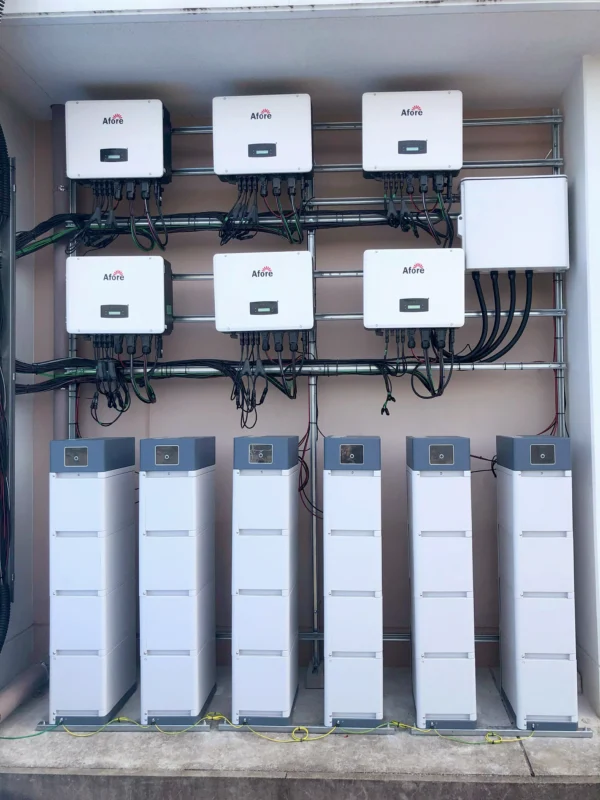
The Role of the Solar Inverter
A solar inverter is a critical component of any solar battery storage system. While solar panels generate direct current (DC) electricity, most household appliances and the grid operate on alternating current (AC). The inverter’s primary role is to convert DC into usable AC electricity, ensuring your stored solar energy can be used efficiently and safely throughout your home. Beyond simple conversion, the inverter coordinates energy flow between solar panels, the battery, and the grid. Understanding its role is essential for designing a solar battery storage system that performs reliably and maximizes the return on investment.
What the Inverter Does
The solar inverter acts as the central hub for energy management in your home. Its functions include:
- DC-to-AC conversion: Converts energy from your solar panels and battery into AC for household use.
- Battery charge management: Regulates charging and discharging of the solar battery to maintain efficiency and extend lifespan.
- Grid interaction: Ensures safe synchronization with the utility grid, prevents backfeeding during outages, and complies with local grid codes.
- Load prioritization: Directs energy to essential loads first, or manages energy storage for peak shifting, depending on your system’s configuration.
In essence, the inverter ensures that your solar battery storage system operates smoothly and safely, delivering the right amount of power when you need it most.
Inverter Types: Hybrid, AC-Coupled, DC-Coupled
Choosing the right inverter architecture is crucial for system performance:
- DC-coupled inverters: Connect both solar panels and the battery on the DC side. This setup is often more efficient for new installations, as it reduces energy conversion losses and allows direct charging from the panels to the battery.
- AC-coupled inverters: The battery connects on the AC side, behind the main inverter. This approach is common in retrofit scenarios, where adding storage to an existing solar system avoids rewiring the DC circuits.
- Hybrid inverters: Combine features of both DC- and AC-coupled systems. They integrate battery management and energy conversion in a single unit, simplifying installation and system monitoring.
Each type has advantages and limitations, and selecting the right one depends on your energy goals, whether you’re adding storage to an existing system or installing a new solar-plus-storage setup.
Power Limits and Load Management
Even with a sufficiently sized battery, the solar inverter dictates how much power can be delivered at any given moment. Homeowners must consider:
- Continuous power rating (kW): Determines how many appliances or circuits can run simultaneously. For example, if your inverter provides 5 kW continuous output, running multiple high-demand appliances like an oven and air conditioner together may exceed its limits.
- Surge capacity: Appliances with motors, pumps, or compressors may require brief spikes of power. A properly rated inverter ensures these surges don’t overload the system.
- Battery compatibility: The inverter must support the battery’s voltage and maximum charge/discharge rates to maintain efficiency and protect the battery over time.
Matching your inverter’s power rating with your home’s peak demand is as important as choosing the correct battery capacity. An undersized inverter can limit system performance, even if the battery has ample kWh stored.
Intelligente Funktionen und Überwachung
Modern inverters often include advanced features that improve efficiency, control, and user experience:
- Energy monitoring: Real-time data on solar generation, battery state-of-charge, and home consumption.
- Load shifting automation: Automatically directs stored solar energy to high-cost periods or critical loads.
- Remote management: Many inverters allow remote monitoring and updates through apps or web portals, providing homeowners with insight and control over energy use.
These features enhance both financial and operational benefits, helping homeowners maximize the value of their solar battery storage while ensuring reliability.
Why the Inverter is Central to Solar Battery Storage
Without a properly sized and compatible inverter, even the largest battery bank cannot deliver its full potential. The inverter ensures:
- Stored energy is converted efficiently for household use.
- Power delivery matches home consumption without overloads.
- Battery health and lifespan are preserved through smart charge/discharge management.
- Safe integration with the grid, preventing hazards during outages or system faults.
In short, the solar inverter is the brain of your solar battery storage system, coordinating panels, batteries, and household loads to provide reliable, efficient, and safe energy. Understanding its role is essential to designing a system that meets your home’s energy needs and long-term goals.
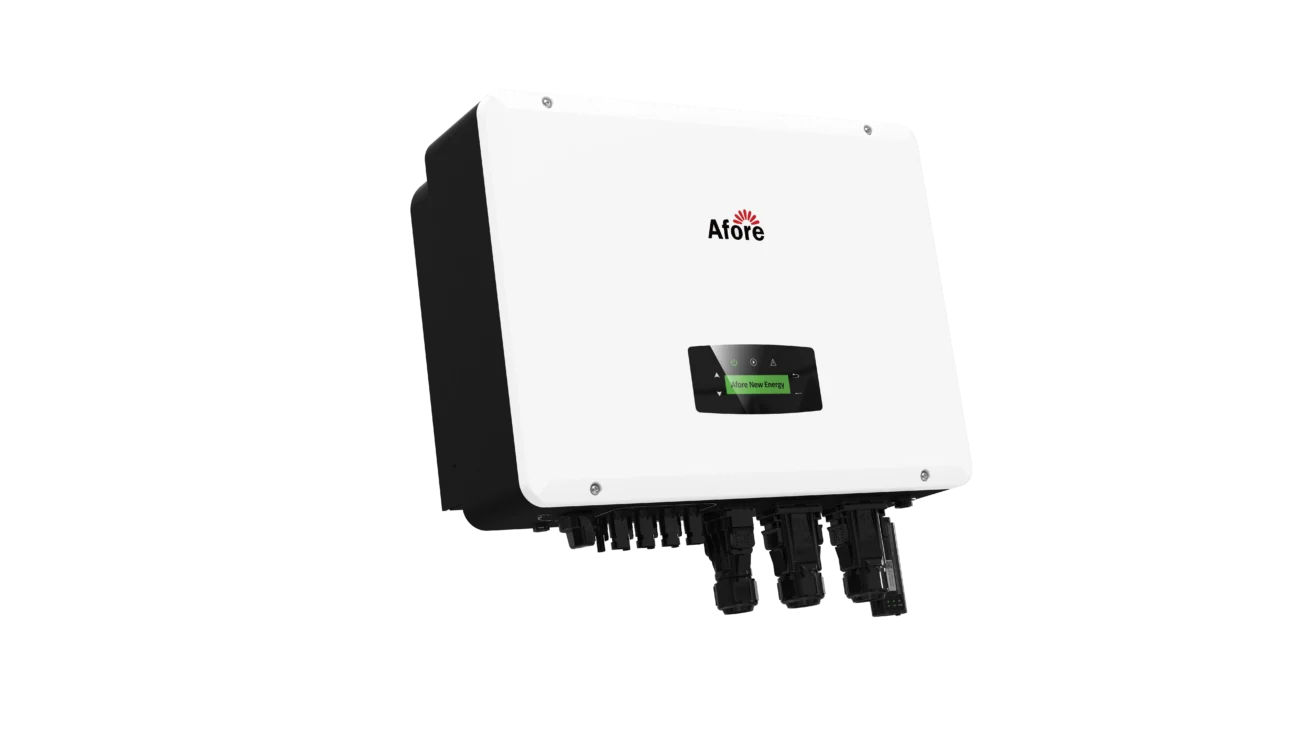
How Long Will a 10 kWh Battery Last?
One of the most common questions homeowners ask when considering solar battery storage is: “How long will a 10 kWh battery last?” Understanding this is critical for designing a system that meets your energy needs, whether for backup, bill reduction, or partial energy independence. The answer depends on several factors, including household load, depth of discharge, battery efficiency, and inverter capacity.
Typical Household Consumption
The first factor in estimating runtime is your home’s electricity demand. In the U.S., the average household consumes roughly 20–30 kWh per day, although this can vary widely depending on the size of the home, appliances, and lifestyle. A 10 kWh battery stores less than half a day’s worth of energy for an average home, which means it may only cover essential loads unless consumption is carefully managed.
Zum Beispiel:
- Essential loads only: Lights, refrigerator, WiFi, and small appliances may draw around 1–1.5 kW continuously. A 10 kWh battery could theoretically supply this load for 6–10 hours.
- Partial household coverage: Adding moderate appliances like a dishwasher or TV may increase load to 2–3 kW, reducing runtime to roughly 3–5 hours.
- Whole-house coverage: Running high-demand appliances like air conditioning, electric oven, or washing machines could significantly reduce runtime, potentially to 2 hours or less.
These examples illustrate why understanding your load profile is essential when sizing your solar battery storage system.
Factors That Affect Battery Runtime
Several technical factors influence how long a 10 kWh battery can deliver power:
- Depth of Discharge (DoD): Most modern batteries recommend using only 80–90% of the total capacity to prolong lifespan. For a 10 kWh battery, this means only 8–9 kWh is safely usable.
- Battery Efficiency: Conversion losses occur when energy moves in and out of the battery. Typical round-trip efficiency ranges from 85–95%, further reducing usable energy.
- Inverter Rating: Even if the battery has sufficient kWh, the solar inverter must be capable of delivering the required kW to match your loads. An undersized inverter can limit the amount of power available at any given time.
- Simultaneous Loads: High-power appliances like electric ovens, heaters, or pumps draw significant energy, reducing total runtime. Careful load management is essential for maximizing usage.
Practical Examples
To make this concrete, consider three scenarios for a 10 kWh battery:
Scenario 1 — Essential Loads Only:
- Loads: Lights, fridge, WiFi, small appliances
- Average continuous draw: 1 kW
- Usable battery: 8 kWh (considering 80% DoD)
- Approximate runtime: 8 hours
Scenario 2 — Moderate Household Usage:
- Loads: Lights, fridge, TV, dishwasher
- Average continuous draw: 2 kW
- Usable battery: 8 kWh
- Approximate runtime: 4 hours
Scenario 3 — Whole-House Scenario:
- Loads: Lights, HVAC, kitchen appliances
- Average continuous draw: 3–4 kW
- Usable battery: 8 kWh
- Approximate runtime: 2–2.5 hours
These examples demonstrate that while a 10 kWh battery can sustain essential loads for a significant portion of the evening or during short outages, it is rarely sufficient to run an entire home for extended periods. Homeowners seeking whole-house backup or extended off-grid operation may require multiple batteries or a larger system.
Aligning Expectations with System Design
When planning a solar battery storage system, it’s crucial to align expectations with reality:
- Backup vs. bill reduction: A 10 kWh battery is ideal for short-term backup or daily energy shifting, but not for multi-day off-grid use.
- Load prioritization: Identify critical circuits to ensure your battery lasts as long as needed during outages.
- Future expansion: Systems can be designed for scalability, allowing additional batteries to increase runtime as energy needs grow.
By combining accurate load assessment, depth of discharge considerations, and proper inverter matching, homeowners can optimize their solar battery storage system to deliver reliable power when it matters most.
Cost Breakdown: How Much Does Solar Battery Storage Cost?
One of the most common questions for homeowners exploring solar battery storage is: “How much does it really cost?” The answer depends on several variables — capacity, installation complexity, inverter type, and whether the system is new or retrofitted. Understanding the full cost breakdown helps you budget effectively and evaluate your return on investment.
While the price of solar battery storage has steadily declined in recent years, it’s still a significant investment. But when combined with the right solar system and energy management strategy, it can offer long-term savings, grid independence, and peace of mind during power outages.
Average Cost of Solar Battery Storage
As of recent data, the average price for solar battery storage ranges between $800 and $1,200 per kilowatt-hour (kWh) of usable capacity, depending on technology type and installation complexity.
Here’s a general guide to system size and approximate cost:
| Battery Capacity | Typical Installed Cost Range | Estimated Backup Duration (Essential Loads) |
|---|---|---|
| 5 kWh | $4,000 – $6,000 | 3–5 hours |
| 10 kWh | $8,000 – $12,000 | 6–10 hours |
| 15 kWh | $11,000 – $17,000 | 10–15 hours |
| 20 kWh | $15,000 – $22,000 | 12–20 hours |
Keep in mind that these figures typically include hardware, labor, permits, and the necessary solar inverter integration. Prices can fluctuate by region and based on whether the installation is part of a new solar system or an upgrade to an existing one.
Key Cost Components
Understanding the cost breakdown helps explain where your money goes and what drives the total investment.
- Battery Unit (40–60% of total cost): This is the heart of the system. Battery chemistry, capacity (kWh), and depth of discharge rating all affect price. Higher-efficiency batteries with longer lifespans generally cost more upfront but save more long-term.
- Solar Inverter (15–25% of total cost): The solar inverter converts DC power from panels and batteries into usable AC electricity. Hybrid inverters that manage both solar generation and storage tend to be more expensive but offer greater flexibility.
- Installation Labor (10–20%): Labor includes wiring, electrical work, and configuring the inverter-battery connection. More complex installations, such as whole-home backup setups, require additional work and safety equipment.
- Permitting and Inspections (5–10%): Depending on local codes and grid interconnection requirements, permits, inspections, and electrical upgrades may add to total costs.
- Balance of System Components (5–10%): These include wiring, breakers, enclosures, mounting hardware, and safety disconnects — all essential for a safe and reliable installation.
When reviewing quotes, it’s essential to verify that all components, installation labor, and necessary electrical upgrades are included. Comparing total system cost per usable kWh provides a more accurate sense of value than comparing battery unit prices alone.
Factors That Influence Cost
Several variables impact the total cost of solar battery storage:
- System size and configuration: Larger systems cost more but offer better per-kWh value due to economies of scale.
- Energy goals: If your aim is whole-house backup, you’ll need a higher-capacity battery and inverter compared to someone seeking only peak-load management.
- Solar inverter type: Hybrid or DC-coupled inverters are more efficient but typically more expensive than AC-coupled retrofits.
- Installation complexity: Homes with older electrical systems or limited panel space may require additional work.
- Local incentives and rebates: Many regions offer tax credits or incentives that can significantly reduce the net cost.
Long-Term Value and Payback
While solar battery storage represents a substantial upfront investment, its long-term value extends beyond simple payback calculations. Homeowners often see benefits such as:
- Energy bill reduction: Store excess solar power during the day and use it during high-rate periods.
- Resilience and security: Keep essential circuits running during outages without relying on fuel-based generators.
- Increased property value: Homes with integrated solar and storage systems are often more attractive to buyers.
- Sustainability: Reduces reliance on fossil fuels and helps stabilize the local grid by lowering peak demand.
In areas with high electricity rates or frequent outages, the return on investment can be realized within 7–12 years, depending on usage patterns and available incentives.
Cost vs. Benefit: A Practical Example
Let’s take a simplified example. Suppose your home uses 25 kWh of electricity daily, and you install a solar battery storage system with 10 kWh of usable capacity at a total cost of $10,000.
- You store solar power during the day and use it at night, avoiding peak utility rates that are 30¢/kWh.
- You effectively save about $3 per day, or roughly $1,000 per year.
- If local incentives reduce your net cost by 30%, your effective payback time could be around 7 years.
While these numbers are illustrative, they show how financial benefits, energy independence, and peace of mind combine to justify the investment in solar battery storage.
Planning Your Budget
When budgeting for your system:
- Start small if needed: You can begin with one battery module and expand later as your needs or budget grow.
- Ensure compatibility: Make sure the solar inverter supports future capacity expansion.
- Ask for detailed quotes: Request itemized breakdowns so you can compare installation labor, components, and warranty terms.
- Factor in lifespan: Higher-quality batteries may cost more upfront but often last longer, offering better lifetime value.

Battery Chemistry & Lifespan
When evaluating solar battery storage, one of the most critical factors to consider is the battery chemistry — the materials and structure that determine how energy is stored, released, and maintained over time. Different chemistries influence not only cost but also lifespan, safety, efficiency, and environmental impact. Understanding these differences allows homeowners to make an informed decision that matches their energy goals and budget.
Why Battery Chemistry Matters
The chemistry of a battery defines how it behaves under charge and discharge cycles, how efficiently it operates, and how long it will last. In solar battery storage, chemistry determines:
- Energy density: How much energy the battery can store per unit of weight or volume.
- Cycle life: How many times it can be charged and discharged before capacity significantly degrades.
- Efficiency: How much stored energy can actually be retrieved for use.
- Thermal stability and safety: How well it tolerates heat and physical stress.
- Maintenance requirements: Whether it needs regular servicing or monitoring.
In short, chemistry sets the foundation for every performance metric that affects system reliability, longevity, and overall value.
Common Battery Chemistries in Solar Storage
There are several types of batteries used in solar battery storage systems today, each with its own advantages and trade-offs.
1. Lithium Iron Phosphate (LiFePO₄)
- Cycle life: 4,000–10,000 cycles (10–15 years under normal conditions)
- Efficiency: Around 95%
- Advantages: High thermal stability, long lifespan, low maintenance, and high round-trip efficiency.
- Considerations: Slightly lower energy density than some other lithium chemistries, which may require more space for large capacities.
LiFePO₄ is widely regarded as one of the safest and most durable options for home energy storage, making it a preferred choice for long-term residential use.
2. Lithium Nickel Manganese Cobalt (NMC)
- Cycle life: 2,500–5,000 cycles (8–12 years)
- Efficiency: Around 90–95%
- Advantages: High energy density, compact form factor, and rapid charge/discharge capability.
- Considerations: More sensitive to temperature changes; requires robust battery management to ensure longevity and safety.
NMC batteries are often used where space is limited or higher power density is needed, such as for fast response backup systems.
3. Lead-Acid (Flooded & AGM)
- Cycle life: 500–1,500 cycles (3–5 years typical)
- Efficiency: 70–85%
- Advantages: Low upfront cost and widely available.
- Considerations: Heavy, require more maintenance, shorter lifespan, and lower usable capacity due to shallow depth of discharge (often 50% or less).
Lead-acid remains a viable choice for smaller systems or temporary setups but generally offers lower long-term value compared to lithium-based chemistries.
4. Flow Batteries
- Cycle life: 10,000+ cycles (potentially 20 years or more)
- Efficiency: 70–85%
- Advantages: Extremely long lifespan, scalable capacity, deep discharge capability.
- Considerations: High upfront cost, larger physical footprint, and more complex installation requirements.
Flow batteries are better suited for commercial or off-grid applications where long-duration storage and deep cycling are priorities.
Understanding Battery Lifespan
Battery lifespan refers to how long a solar battery storage system can operate effectively before its capacity significantly degrades — usually when it can only store about 70–80% of its original capacity. Several factors determine how long a battery will last:
- Depth of Discharge (DoD): The deeper you discharge the battery each cycle, the shorter its lifespan. Keeping discharge below 80–90% of total capacity helps preserve health.
- Cycle Count: A “cycle” means one full discharge and recharge. For example, a 5,000-cycle battery used daily can last roughly 13–14 years before major capacity loss.
- Operating Temperature: Extreme heat accelerates chemical degradation, while very cold conditions reduce efficiency. Proper ventilation and thermal regulation are crucial for longevity.
- Charging Rate: Charging or discharging too quickly can stress battery cells, increasing wear and reducing total lifespan.
- Battery Management System (BMS): Most modern systems include smart monitoring to prevent overcharging, over-discharging, and overheating — all of which protect and extend lifespan.
Expected Lifespan by Chemistry
| Akku-Typ | Typical Lifespan (Years) | Cycle Life Range | Usable DoD (%) | Efficiency (%) |
|---|---|---|---|---|
| Lithium Iron Phosphate | 10–15 | 4,000–10,000 | 80–95 | 93–98 |
| Lithium NMC | 8–12 | 2,500–5,000 | 80–90 | 90–95 |
| Lead-Acid (AGM/Flooded) | 3–5 | 500–1,500 | 40–60 | 70–85 |
| Flow Battery | 15–25 | 10,000+ | 100 | 70–85 |
These figures represent averages under normal operating conditions; actual performance depends on usage habits, environment, and maintenance practices.
How to Extend Battery Lifespan
Maximizing the lifespan of your solar battery storage system requires proper usage and maintenance practices:
- Avoid deep discharges whenever possible; use only 70–80% of total capacity for routine cycling.
- Keep temperatures moderate, ideally between 15°C and 30°C.
- Perform periodic inspections to check for wiring corrosion, loose connections, or damage.
- Ensure your solar inverter and battery management system are properly configured for voltage, current, and DoD limits.
- Avoid excessive idle periods; batteries degrade faster if left unused for long stretches.
These habits not only extend operational life but also improve performance and safety over time.
Umweltbezogene Überlegungen
Battery chemistry also affects environmental sustainability. Lithium-based chemistries, particularly LiFePO₄, are more eco-friendly and have longer recycling potential compared to older lead-acid types. Proper recycling at end-of-life reduces waste and ensures valuable materials like lithium, copper, and nickel can be recovered for reuse.
As technology continues to advance, solar battery storage systems are becoming cleaner, safer, and more efficient — contributing to a more sustainable energy ecosystem.
Installation, Interconnection & Regulations
Installing a solar battery storage system involves much more than simply mounting equipment on a wall. It’s a carefully planned process that integrates electrical safety, grid interconnection, and compliance with local and national regulations. Proper installation ensures your system performs efficiently, safely, and legally — all while maximizing its lifespan and return on investment.
Whether you’re adding a battery to an existing solar array or installing a new solar-plus-storage setup, understanding the installation and interconnection process helps you make informed decisions and avoid costly mistakes.
Pre-Installation Assessment
Before installation begins, a professional energy audit and system design assessment are essential. This stage determines the ideal battery size, placement, and compatibility with your solar inverter and electrical panel. Key steps typically include:
- Load analysis: Evaluating your household’s energy consumption to determine the optimal storage capacity.
- Site inspection: Ensuring your home’s electrical infrastructure and available space can accommodate the battery safely.
- System design: Matching your solar battery storage capacity with inverter output, backup priorities, and safety standards.
- Permitting requirements: Gathering documents needed for electrical, building, and grid interconnection permits.
This initial phase ensures your design meets both performance expectations and local safety regulations before any hardware is installed.
Physical Installation
The physical installation of solar battery storage systems must comply with strict electrical and building codes. The process usually includes:
- Mounting and placement: Batteries should be installed in a cool, dry, and well-ventilated area, away from direct sunlight or extreme temperatures.
- Electrical connections: The system is wired to your main electrical panel and integrated with the solar inverter, ensuring seamless energy flow between solar panels, battery, and grid.
- Safety measures: Proper fusing, disconnects, and grounding prevent overloads and short circuits.
- Monitoring setup: Smart monitoring devices and energy management systems are connected for real-time performance tracking and fault detection.
For systems intended to provide backup power, an automatic transfer switch (ATS) or sub-panel is typically installed to isolate critical circuits during grid outages, ensuring safe and reliable operation.
Interconnection with the Utility Grid
Once the physical installation is complete, the next step is grid interconnection — the process of safely linking your solar battery storage and solar inverter system to the utility network.
Key considerations include:
- Net metering and export limits: Some utilities allow homeowners to export excess solar energy back to the grid for credits, while others cap export limits or require “zero-export” configurations.
- Grid synchronization: The solar inverter ensures power fed into the grid matches voltage and frequency standards, preventing instability or safety hazards.
- Anti-islanding protection: During outages, the system must automatically disconnect from the grid to protect utility workers repairing power lines.
- Utility approval: Final connection typically requires inspection and sign-off by local authorities or utility representatives to verify compliance.
Proper interconnection ensures your system operates legally and efficiently while maintaining the stability and safety of the wider grid.
Regulatory Compliance
Every solar battery storage system must comply with national and local codes to guarantee safety and reliability. Regulatory compliance covers:
- Electrical codes: Installation must adhere to the National Electrical Code (NEC) or equivalent standards, ensuring safe wiring, grounding, and circuit protection.
- Fire safety: Fire-rated enclosures, ventilation, and clearances help prevent hazards and simplify emergency response.
- Permitting and inspection: Local authorities may require multiple inspections — for electrical, structural, and interconnection compliance — before the system can be activated.
- Utility interconnection agreements: These contracts outline how your system interacts with the grid, export policies, and metering requirements.
Compliance is not merely bureaucratic; it ensures the system’s long-term reliability and guarantees that your investment qualifies for available incentives or rebates.
Typical Installation Timeline
While timelines vary, most solar battery storage installations follow a predictable sequence:
- Design and permitting: 2–4 weeks (depending on local regulations).
- Installation and wiring: 1–3 days for standard residential systems.
- Inspection and utility approval: 1–3 weeks.
- System activation and testing: 1 day.
Overall, homeowners can expect the process from design to activation to take 4–8 weeks, though remote areas or regions with stringent utility requirements may take longer.
Safety and Maintenance Considerations
Even after installation, ensuring system safety and longevity requires periodic checks. Best practices include:
- Visual inspections: Regularly check for corrosion, loose wires, or physical damage.
- Firmware updates: Keep your solar inverter and energy management system up to date for optimal performance and security.
- Battery health monitoring: Track cycle count, depth of discharge, and temperature to prevent premature degradation.
- Emergency procedures: Maintain easy access to disconnect switches and ensure all household members know how to use them safely.
These proactive measures help preserve both efficiency and safety while maximizing your battery’s lifespan.
Common Installation Challenges and Solutions
- Limited indoor space: Use wall-mounted or modular designs that maximize compactness.
- Older electrical panels: Upgrading your main service panel may be necessary to accommodate modern solar inverter and battery systems.
- Complex interconnection rules: Working with certified electricians ensures your design meets all grid requirements without delays.
- Weather exposure: Outdoor installations must include weatherproof enclosures and thermal protection for long-term durability.
By anticipating and addressing these challenges early, you can streamline the installation process and avoid costly revisions later.
Warum eine ordnungsgemäße Installation wichtig ist
A well-installed solar battery storage system is more than a technical achievement — it’s an investment in safety, performance, and longevity. Proper installation ensures:
- Maximum energy efficiency through correct inverter-battery coordination.
- Compliance with all grid safety and export requirements.
- Reduced risk of electrical faults or performance degradation.
- Eligibility for incentives, tax credits, or warranty coverage.
In other words, professional installation and regulatory compliance transform your battery system from a standalone device into a dependable home energy solution that performs optimally for years to come.
Financing, Incentives & Tax Credits
One of the most appealing aspects of adopting solar battery storage is that the financial landscape is becoming more favorable each year. While the upfront cost can seem daunting, there are a variety of financing options, tax credits, and government incentives designed to make solar-plus-storage systems more accessible. Understanding these programs allows homeowners to make informed investment decisions and maximize their savings.
The True Cost Perspective
Before exploring incentives, it’s essential to understand what determines the actual cost of a solar battery storage system. The total expense depends on several variables, including:
- Battery capacity (kWh): Larger batteries cost more but can store greater amounts of energy.
- Installation complexity: Electrical upgrades, permits, and labor costs can vary by region.
- Solar inverter integration: Pairing a solar inverter with storage may increase initial cost but improves long-term efficiency.
- Backup requirements: Systems designed to power essential loads cost less than those capable of running an entire home.
Once these factors are accounted for, homeowners can explore ways to reduce out-of-pocket costs through strategic financing and available incentives.
Financing Options for Homeowners
Investing in solar battery storage doesn’t always require paying the full cost upfront. Several flexible financing models make it easier to start saving immediately while spreading payments over time.
- Cash purchase: Paying in full offers the highest long-term return, as you avoid interest costs and own the system outright.
- Solar loans: These loans provide affordable monthly payments, often with fixed interest rates. Loan terms typically range from 5 to 20 years, depending on credit and lender.
- Home equity financing: Some homeowners leverage equity through a home equity loan or line of credit to fund installation, often at lower interest rates than unsecured loans.
- Lease or power purchase agreement (PPA): While less common for storage-only systems, these agreements allow homeowners to benefit from stored solar energy without owning the equipment directly.
Choosing the right financing option depends on your budget, tax situation, and long-term energy goals. A well-structured payment plan can make solar battery storage affordable even for households with limited upfront capital.
Federal Tax Credits
One of the most powerful financial incentives available today is the federal tax credit for renewable energy systems. This credit allows homeowners to deduct a significant percentage of the total cost of a solar battery storage system — including equipment, installation, and labor — from their federal taxes.
Here’s how it generally works:
- The tax credit is applied to the total system cost after installation.
- To qualify, the battery typically must be charged primarily by solar energy.
- Homeowners claim the credit when filing their annual tax return.
- Any unused credit may often be carried forward to future tax years.
This incentive substantially reduces upfront investment and helps shorten the payback period of the system.
State and Local Incentives
In addition to federal tax benefits, many states, municipalities, and utilities offer their own financial programs to encourage the adoption of solar battery storage. These may include:
- Cash rebates: Direct rebates applied after installation, reducing total system cost.
- Performance-based incentives: Payments based on the energy your system produces or stores.
- Sales and property tax exemptions: Many regions exempt renewable energy equipment from sales tax or prevent property tax increases due to added system value.
- Time-of-use programs: Certain utilities allow homeowners to store energy during off-peak hours and discharge it when rates are higher, increasing savings.
The combination of federal, state, and local programs can sometimes cover 30%–50% or more of total installation costs, depending on eligibility.
Utility and Grid Services Incentives
Some utilities offer specialized programs that reward homeowners for participating in grid-support initiatives. For instance, your solar battery storage system can occasionally discharge energy back to the grid during peak demand periods, helping stabilize local supply.
This type of “virtual power plant” participation allows homeowners to earn credits or compensation for helping balance grid loads — all while maintaining backup power capabilities. In return, the system’s smart inverter communicates with the utility to coordinate power flow, ensuring safety and efficiency.
While participation varies by location, such programs can provide ongoing financial benefits beyond simple energy bill reduction.
Estimating Payback Periods
A key factor in evaluating solar battery storage investments is the payback period — the time it takes for energy savings and incentives to cover the initial cost.
Typical payback calculations include:
- System cost: After all credits and rebates.
- Annual energy savings: Reduced grid usage and optimized time-of-use billing.
- Battery degradation: Small decreases in storage capacity over time.
- Maintenance and warranty coverage: Usually minimal, but factored into total cost of ownership.
On average, payback periods for solar-plus-storage systems range between 7 and 12 years, depending on system size, incentives, and local electricity rates. Once paid off, the system continues generating value for years, often exceeding a 15-year lifespan.
Maximizing ROI Through Smart Planning
To maximize your return on investment, consider these strategies:
- Right-size your system: Oversizing storage capacity may delay payback; match your battery to your daily load and backup goals.
- Take advantage of incentives early: Many incentive programs have declining rates as adoption grows.
- Optimize usage patterns: Use your stored solar energy during peak billing hours to reduce utility costs.
- Integrate with a high-efficiency solar inverter: Proper inverter pairing increases round-trip efficiency and total energy yield.
With thoughtful planning and awareness of available programs, homeowners can reduce installation costs, improve energy independence, and achieve faster financial returns.
Langfristige finanzielle Vorteile
Beyond immediate incentives, solar battery storage delivers sustained financial value over time:
- Protection from rising electricity rates: Stored energy reduces dependency on the grid and shields you from unpredictable utility price hikes.
- Increased property value: Homes equipped with solar and storage systems often appraise higher and sell faster.
- Emergency preparedness: Reliable backup power adds non-financial value — peace of mind during outages.
When factoring in these benefits, the total lifetime return on investment often exceeds the initial cost by a significant margin.

Real-World Case Studies & Sizing Examples
Understanding solar battery storage in theory is helpful — but seeing how it performs in real homes brings everything to life. Real-world examples reveal how system size, energy use, and lifestyle combine to shape performance and savings. By studying actual scenarios, homeowners can better estimate how much storage they need, how long it will last, and what kind of return to expect over time.
Below are several case-based examples showing how solar battery storage interacts with real household consumption patterns, daily energy production, and system design choices.
Case Study 1: Suburban Family Home with Partial Backup
Profile:
- 4-person household
- Daily energy use: ~25 kWh
- Goal: Maintain power for essentials during short outages
System setup:
- Solar array: 6 kW rooftop
- Solar battery storage: 10 kWh capacity
- Paired with a Hybrid-Solarwechselrichter
Performance insights:
This family prioritized backup for essential circuits: lighting, Wi-Fi, refrigerator, sump pump, and small appliances. During normal operation, the battery stores excess daytime solar power and discharges it in the evening, reducing grid usage during high-rate periods.
In a power outage, the battery sustains critical loads for about 8 hours, depending on usage. The system offsets roughly 60% of their total grid electricity, and their annual utility bills dropped by nearly half.
Lesson:
For families seeking reliable partial backup, a 10 kWh battery paired with an efficient inverter is a balanced, cost-effective option. It provides noticeable savings and backup capability without oversizing the system.
Case Study 2: Energy-Efficient Home with Full Backup
Profile:
- Energy-conscious couple in a well-insulated home
- Daily energy use: 15 kWh
- Goal: Achieve near-complete self-sufficiency and backup power
System setup:
- Solar array: 7.5 kW rooftop
- Solar battery storage: 15 kWh capacity
- Advanced solar inverter with smart load management
Performance insights:
With lower-than-average daily consumption and efficient home design, this household achieves 95% solar self-sufficiency. The battery provides full backup for nearly 12–14 hours, covering essentials and moderate use of kitchen appliances.
During winter or cloudy periods, grid dependency rises slightly, but the system remains resilient. Over a year, the couple saves thousands in energy costs and enjoys complete energy security.
Lesson:
Homes that are energy-efficient or use smaller appliances can maintain full coverage with smaller storage capacities. Proper inverter and load management are critical to achieving long runtimes and smooth transitions between solar, battery, and grid power.
Case Study 3: Large Home with Whole-House Backup
Profile:
- 5-person household
- Daily energy use: 40–45 kWh
- Goal: Power entire home through extended outages
System setup:
- Solar array: 12 kW rooftop
- Solar battery storage: 30 kWh (three 10 kWh units)
- High-capacity solar inverter rated at 10 kW continuous output
Performance insights:
This homeowner designed their system to handle high-demand appliances — air conditioning, electric oven, water heater, and laundry machines — during outages. With a 30 kWh storage bank, they can operate for 10–12 hours of full power, or more than 24 hours when limiting to critical loads.
The inverter manages high simultaneous loads without tripping circuits, and intelligent control prioritizes solar charging during daylight. During grid-connected periods, time-of-use optimization shifts most energy consumption to stored solar, reducing electricity bills significantly.
Lesson:
Whole-house backup requires substantial storage and inverter capacity. For high-consumption homes, scaling both components ensures continuous comfort and energy reliability — but also increases upfront costs.
Case Study 4: Rural Off-Grid Cabin
Profile:
- Remote cabin with no grid access
- Daily energy use: 10–12 kWh
- Goal: Reliable off-grid power for lighting, refrigeration, and tools
System setup:
- Solar array: 5 kW ground-mounted
- Solar battery storage: 20 kWh
- Standalone solar inverter integrated with generator backup
Performance insights:
This cabin operates entirely off-grid, with the battery providing overnight power and the solar array recharging during the day. On sunny days, the system performs flawlessly, powering all loads. During cloudy stretches, the generator recharges the battery to maintain reliability.
Lesson:
Off-grid systems demand larger battery reserves to cover multiple days without sunlight. Properly sizing the inverter ensures compatibility with high-power tools or appliances used intermittently.
Simplified Sizing Examples
| Home Type | Daily Use (kWh) | Recommended Battery Size | Estimated Backup Duration | Goal |
|---|---|---|---|---|
| Small apartment | 10 | 5–8 kWh | 6–8 hours | Partial backup |
| Medium home | 25 | 10–15 kWh | 8–12 hours | Essential loads |
| Large home | 40+ | 25–30 kWh | 10–24 hours | Whole-house backup |
| Off-grid cabin | 12 | 20 kWh | 1–2 days | Full autonomy |
This table provides a simple reference point for estimating how much solar battery storage you might need. However, every household is unique — factors such as inverter size, efficiency, and appliance behavior will influence actual performance.
FAQs
-
How much solar battery storage do I need?
The amount of solar battery storage you need depends on your daily electricity consumption, backup goals, and solar system size.
• For essential backup (lights, Wi-Fi, fridge), most homes need about 5–10 kWh.
• For partial home coverage, 10–15 kWh is typical.
• For whole-house backup, 20–30 kWh or more is recommended.
You can estimate your needs by checking your daily kWh usage on your utility bill and deciding how long you want your home powered during an outage. A qualified installer can fine-tune this number based on your home’s load profile and solar inverter capacity. -
Is solar battery storage worth it?
For many homeowners, yes — solar battery storage is worth it, especially in areas with high electricity costs or frequent outages. It allows you to:
• Store excess solar energy for nighttime or peak-rate use.
• Maintain power during blackouts.
• Reduce dependence on the grid.
• Increase your overall energy efficiency.
While upfront costs can be significant, incentives and long-term savings typically offset them within 7–12 years, making solar storage both a financial and practical investment. -
How long will a 10 kWh battery last?
A 10 kWh solar battery storage system typically powers:
• Essential loads: 6–10 hours (lights, fridge, Wi-Fi, small appliances).
• Partial home loads: 3–5 hours (add TVs, dishwasher).
• Whole house: 2–3 hours (including large appliances).
Duration varies by load, depth of discharge, and solar inverter efficiency. For longer runtime, many homeowners combine multiple batteries or optimize usage to critical loads only. -
How much does it cost for solar battery storage?
The cost of solar battery storage depends on system size, installation complexity, and energy needs. As a general guideline:
• Small systems (5–10 kWh): $4,000–$9,000
• Medium systems (10–15 kWh): $9,000–$14,000
• Large systems (20–30 kWh): $15,000–$25,000
These prices include equipment, solar inverter integration, and installation. Federal and local incentives can reduce costs by 20–40%, depending on eligibility. -
Can a 10 kWh battery run a whole house?
In most cases, a 10 kWh solar battery storage system cannot power an entire house for an extended period — but it can cover essentials for several hours. Whole-house operation usually requires 20–30 kWh of storage or more, especially if high-demand appliances are used.
That said, combining smart load management and a properly sized solar inverter can extend runtime and make smaller systems more effective during outages. -
How long do solar batteries last before replacement?
Most modern solar battery storage systems last 10–15 years under normal conditions. Their lifespan depends on:
• Depth of discharge (DoD) and charge cycles
• Temperature and environmental conditions
• System maintenance and inverter efficiency
Even after the warranty period, many batteries retain 70–80% of their original capacity, continuing to provide usable energy for years. -
Can I add solar battery storage to an existing solar system?
Yes. You can retrofit most solar systems with solar battery storage by adding a compatible solar inverter or hybrid system. The key is ensuring that the inverter can manage both solar generation and battery discharge efficiently. Retrofitting may require additional wiring or control systems, but it’s entirely feasible for most existing solar setups.
-
What happens when the battery is full?
Once your solar battery storage is fully charged, excess energy typically flows to the grid or reduces your solar panel output automatically. The solar inverter manages this transition seamlessly, ensuring that energy generation and consumption stay balanced without overloading the system.
-
Do solar batteries work during a power outage?
Yes — if your system includes a hybrid solar inverter and an automatic transfer switch. When the grid goes down, the inverter isolates your system and continues powering your home from stored energy. However, grid-tied systems without backup capability automatically shut off for safety reasons.
-
How efficient is solar battery storage?
Modern solar battery storage systems are highly efficient, with round-trip efficiencies between 85–95%. That means for every 10 kWh of solar energy stored, about 8.5–9.5 kWh is usable. Efficiency depends on inverter performance, temperature, and battery chemistry — lithium-based batteries generally perform best in this regard.
-
Can solar battery storage increase home value?
Yes. Homes equipped with solar battery storage typically sell faster and for higher prices than those without. Buyers value the added energy independence, reduced utility bills, and resilience during outages. Real estate studies have shown that energy-efficient homes often command a noticeable market premium.
-
How does solar battery storage work with time-of-use rates?
If your utility uses time-of-use billing, solar battery storage can dramatically reduce your energy costs. The system stores cheap daytime solar energy and discharges it during expensive evening peak hours. By using stored energy strategically, you can avoid higher rates and maximize your savings without sacrificing comfort.
-
Do I still need a solar inverter with battery storage?
Absolutely. The solar inverter is the heart of your solar-plus-storage system. It converts the DC electricity from both solar panels and batteries into AC electricity your home can use. It also manages charging and discharging cycles, ensuring smooth, efficient operation between your solar system, batteries, and the grid.
-
How can I maximize the lifespan of my solar battery storage system?
To extend your battery’s life:
• Avoid deep discharges whenever possible.
• Keep the system in a well-ventilated, temperature-stable location.
• Regularly monitor performance and update firmware.
• Pair your system with an efficient solar inverter to minimize energy losses.
Routine monitoring and responsible usage habits can significantly extend battery health and long-term performance. -
What maintenance does solar battery storage require?
Solar battery storage systems are largely low-maintenance. Most modern units require only periodic inspections and firmware updates. Check for:
• Secure electrical connections
• Signs of corrosion or physical damage
• Proper ventilation and temperature stability
An annual professional inspection ensures everything remains safe and efficient, protecting your investment for the long run. -
What’s the best way to size a system for both savings and backup?
The most effective approach is to start with your average daily energy consumption and decide how long you need power during an outage. Then:
• Multiply your average hourly load by desired backup hours.
• Adjust for inverter efficiency (typically 90–95%).
• Round up to the nearest available battery size.
This simple method ensures your solar battery storage system meets your actual needs — not just a marketing estimate.





